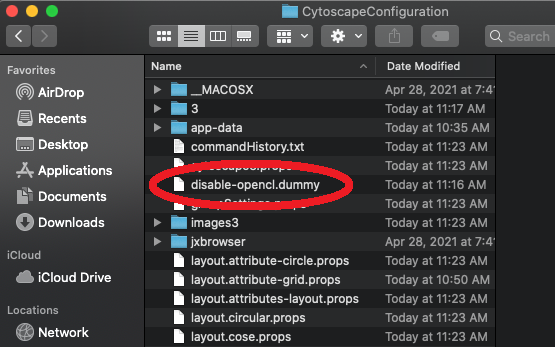We have screened all log4j dependencies in the core Cytoscape application, including core apps, as well
as the hundreds of apps in the Cytoscape App Store. This is our current assessment and plan of action:
The typical pattern from this exploit is through HTTP requests to a web server. The CyREST component of
Cytoscape does not use a vunlerable version of log4j. That's good news!
As a standalone, desktop application the only other
exposure is through user-directed actions, e.g., importing a file from online.
Please use caution with importing any type of network or data files into Cytoscape.
We have released a new 3.9.1 version of Cytoscape which addresses all known log4j issues.
In more detail, we updated log4j dependencies in Cytoscape to 2.17.1 via pax-logging (1.11.13).
This update fixes the following vulnerabilities: CVE-2021-4104, CVE-2021-45046, CVE-2021-44228, and CVE-2021-44832.
We have also worked with app authors to produce updated references in their project packages.
Conveniently, the apps using log4j via the ops4j pax package will automatically adopt the latest version provided
by the 3.9.1 release. Nevertheless, we are working with app authors to update all log4j dependency references in
their projects to avoid even the appearance of vulnerability.
After the release of Cytoscape 3.9.1, we identified another log4j component that uses an old version of Log4J 1.
To our knowledge, this component is *not* vulnerable to any of the known log4j 1.x attacks since it includes it's
own log4.properties file that does not use any of the vulnerable logging mechanisms. Nevertheless, in an abundance
of caution, we have created a version of this component that specifically strips out all of the vulnerable classes,
including JMSSink.class (fixes CVE-2022-23302), JMSAppender.class (fixes CVE-2019-17571), SocketServer.class (fixes CVE-2019-17571),
JDBCAppender.class (fixes CVE-2022-23305), SMTPAppender.class (for completeness), and all of the embedded Chainsaw classes
(fixes CVE-2020-9493). None of these classes were used for the indicated component, and based on our reading of the CVE's
referenced above, the included log4j.properties file rendered these vulnerabilities moot. However, the replacement component,
with the noted classes removed is available for download at:
uk.ac.ebi.enfin.mi.cluster.micluster-1.6.jar. Put this jar file in the directory
/Applications/Cytoscape_v3.9.1/framework/system/cytoscape-temp/uk.ac.ebi.enfin.mi.cluster.micluster/1.6 on a Mac,
\Program Files\Cytoscape_v3.9.1\framework\system\cytoscape-temp\uk.ac.ebi.enfin.mi.cluster.micluster\1.6 on a Windows machine,
or /opt/Cytoscape_v3.9.1/framework/system/cytoscape-temp/uk.ac.ebi.enfin.mi.cluster.micluster/1.6/ on Linux. Note that
these are the default locations, and if you installed Cytoscape 3.9.1 in an alternative location, then you should
substitute the appropriate path.
